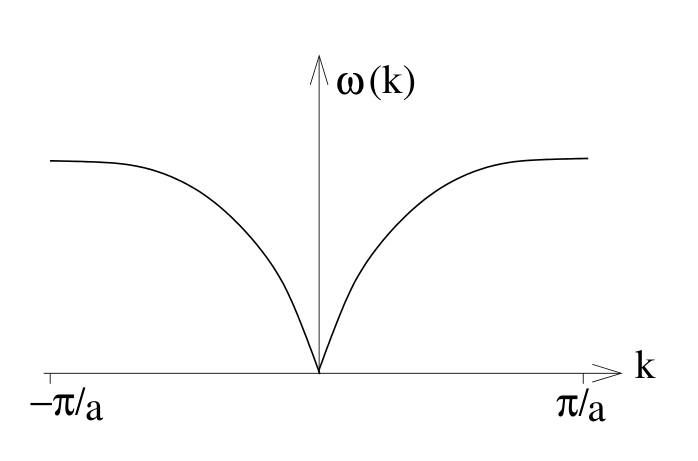In this section we would like to describe the properties of the atoms that make up the crystal.
In the Born Oppenheimer approximationtodo we described them as fixed in place but now we want to make a more precise analysis.
We start by modelling the atoms with a mass-spring system like in the image below
In 1D we have the Hooke law:
with
Nomenclature
We identify the position of a primitive cell with a translation vector
- The
-th primitive cell is identified by - Atoms are identified by Greek letters
- The crystallographic directions are identified by
This means that the position of the atom
We also need to introduce the term
We call
If we work with the component
where
are called coupling constant,
They have the dimensions of spring constants and serve to generalize the spring constants of the harmonic oscillator to a system with many degrees of freedom. (Luth, 4.2)
We can write the force acting on atom
Equation of motion
If we call
which is the generalized version of
If we have
We are going to impose (todo why?) the solution
where
What we want to do now is to calculate the second derivative of
where
is the interaction matrix and is independent from
Equations
We call
If
Normal modes for 1D monoatomic chain
In this case we have a monoatomic linear chain of atoms which are allowed to move in the horizontal direction only. Each atom has mass
The atoms are modelled as a mass-spring system with springs with elastic force constant
Equation of motion
The equation of motion for the atom
Where the three terms represent the contributions of the atoms
Substituting the three orange expression that we got graphically we get:
The solutions are in the form: #todo why?
If we apply the BVK conditions (i.e. the atom
which is satisfied when
where
If we substitute these results into the equation of motion we get (calculations of the derivatives omitted):

Along the chain we have propagating waves with:
- Phase velocity:
- Group velocity:
For
which is the typical behaviour of acoustic waves.
Normal modes for 1D bi-atomic chain
This case is similar to the one before but the lattice, in this case, is composed of 2 different atoms.
The process is the same as before but now we need to take into consideration that we are dealing with 2 different kinds of atoms and thus we will have two equations of motion:
which can be solved similarly to before (BVK, etc) getting a system of equation that can be solved by imposing the determinant of its matrix equal to 0:
The solution we get is
which, similarly to before, has a periodicity of
Where we introduced the constant
For the optical branch, in
todo finish last part


